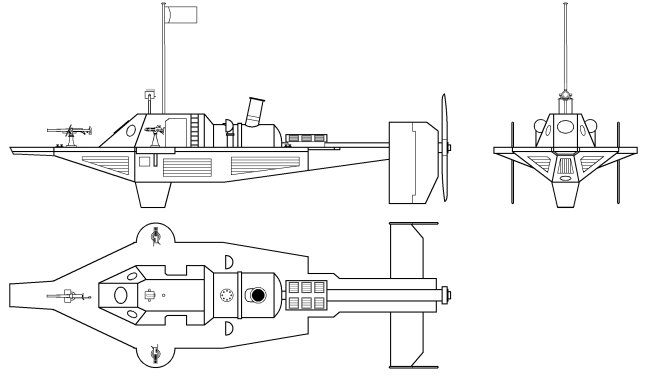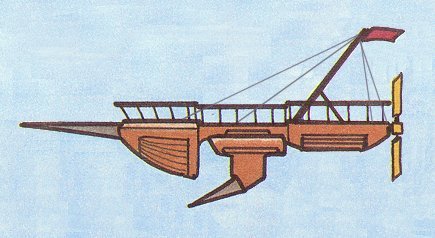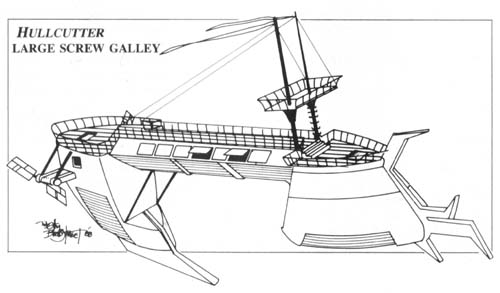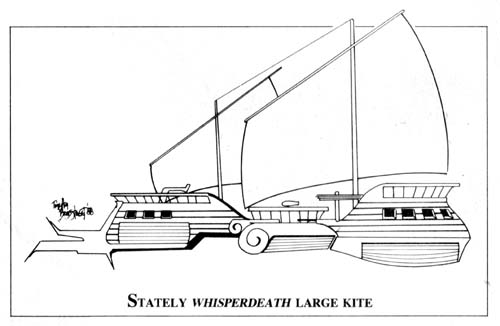Type: Aberration
Size: Medium (5’ long)
Intelligence: High (13-18)
Hit Dice: 4 (12-16 hp)
Movement: 40 (Fly 10)
Armor Class: 14
Attacks: 2 pincers (1d6)
Saving Throws: F14, R14, W10
Special: Survive in vacuum, immune to cold
Environment: Cold places
No. Appearing: Clutch (1d8)
XP Value: 400 (CL 5)
These alien fungi first appeared in H.P. Lovecraft’s story “The Whisperer in Darkness” (1931). They are medium-sized creatures apparently composed of fungus, with a pink exoskeleton. Their heads, such as they are, are covered in antennae. They have numerous pairs of legs, and a pair of bat-like wings that allow them to propel themselves via the solar winds at 1 million mph through the vacuum of space. The matter that composes their bodies does not apparently register on photographic film, though it is solid and can be seen by the naked eye.
The mi-go have a very high level of technology. They can, for example, remove a human’s brain and keep it alive in a special “brain cylinder”. They can also attach mechanisms to this cylinder to permit the brain to see and hear. They do this to create cybernetic computers of great complexity and power. These semi-organic computers are used in all manner of strange devices, including starships, networked computer systems, or to control robot bodies.
MI-GO IN MYTHOS SPACE
The Mi-Go are a mysterious yet very active element in the universe of Mythos Space. The majority of humankind knows that these aliens exist, but few have all of the facts straight. The Old Ones are as much a threat to the MiGo as they are to other species, and so an "enemy of my enemy" sort of alliance exists betweeen Terran races and the MiGo. However the MiGo prefer to keep their distance, using their Grey servitors (see below) as go-betweens.
In the Bai Hu sector, the Mi-Go are centered on the planet Abbith in the Zaoth (Delta Tauri) system. This world is ruled by a society of hyper-intelligent cyborgs who maintain a vast library. Other races are known to visit this system, including Elderians and Yithians.
Mi-Go Saucer (Aircraft)
Gargantuan Construct
 HD 30 (150 hp)
HD 30 (150 hp)AC 16 (DR 20)
SPD 1,200 mph (atmo), 2 million mph in space
Climb 600
Ceiling 40,000'
MVR +8
CP 4/8
WT 50 tons
Weapons: Death Ray
These vessels are piloted primarily by Greys, but will occasionally house a Mi-Go and its Grey Worker servants. Saucers are not true Spaceships, though they can fly to and from orbit. Saucers appear as they have for ages in UFO accounts and in classic science fiction films. Standard Saucers have accommodations for eight (4 crew, 4 passengers), and space for 25 tons of cargo.
Saucers use the Dogfight rules while in combat. See Grit and Vigor page 75 for details.
Death Ray: Once per round these ships can fire a 90’ cone of intense heat from its belly cannon. The cone inflicts 10d6 points damage (Reflex saving throw allowed for half damage). As an added feature, this ray can be set to "capture", causing living targets to make a WILL save or be immobilized for 1d4 hours.
Mi-Go Carrier (Starship)
Gigantic Construct
 HD 110
HD 110 AC 25 (DR 20)
SPD 1,200 mph (atmo), 10 million mph (space)
MVR +4
CP 50/600
WT 6,000 tons
ARM 4x Death Rays, 2x20 Missiles, 4 Saucers.
These Cigar Shaped vessels are the primary vessels used by the Mi-Go to travel between the planets and stars. These ships are commanded by at least 50 leader type greys and 600+ worker-type greys and can carry 2000 tons of cargo. MiGo occupants of these vessels will have their own quarters and sections of the ship, and will not normally mingle. Mi-Go Carriers are generally cargo and research vessels, and not normally used in warfare, though they can fight.
Carriers are true Space Ships and so use the Space Battle rules.
Death Ray: Once per round these ships can fire a 90’ cone of intense heat from its belly cannon. The cone inflicts 10d6 points damage (Reflex saving throw allowed for half damage). As an added feature, this ray can be set to "capture", causing living targets to make a WILL save or be immobilized for 1d4 hours.
Greys (Gray Ones, Zetas, Space Goblins)
Worker
Type: Monstrous Humanoid
Size: Small (4’ tall)
Intelligence: High (13-18)
Hit Dice: 1
Movement: 30/150
Armor Class: 10 [Silver]
Attacks: Ego whip (see psychic powers) or slam (1d2)
Saving Throws: F16, R13, W12
Environment: Any
No. Appearing: 1d20
Alignment: Neutral
XP Value: 100 (CL 2)
Leader
Type: Monstrous Humanoid
Size: Medium (6’ tall)
Intelligence: Super (19+)
Hit Dice: 3
Movement: 40/200
Armor Class: 12 [Silver]
Attacks: Ego whip, id insinuation or psychic crush or slam (1d2)
Saving Throws: F14, R12, W9
Environment: Any
No. Appearing: 1d4 + 15 workers each
Alignment: Neutral
XP Value: 300 (CL 4)
Greys, are a grey-skinned, collective-intelligence race that was bred by the Mi-Go in ancient times to serve as a servant species for the Mi-Go. All greys have thin arms and legs, oversized heads and eyes, and extremely long fingers. Greys have a psychic aura which forces those who approach within 10 feet of them to pass a Will saving throw vs. fear or become frightened. It is believed that greys are not evil, but merely inscrutable and totally alien in motivation. Individuals that have claimed to meet the greys will have wildly different stories to tell about them.
Greys travel in flying saucers. For every 15 greys there is always at least one leader type. A leader must be present for transport of any mortals or livestock.
These rules use the mavelous Grit and Vigor RPG by John Stater. GnV is a marvelously pulpy game system that used the d20 system as a template, but with its own feel. Its a smooth new treatment with a classic gaming feel. Check it out!


















